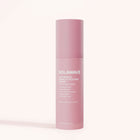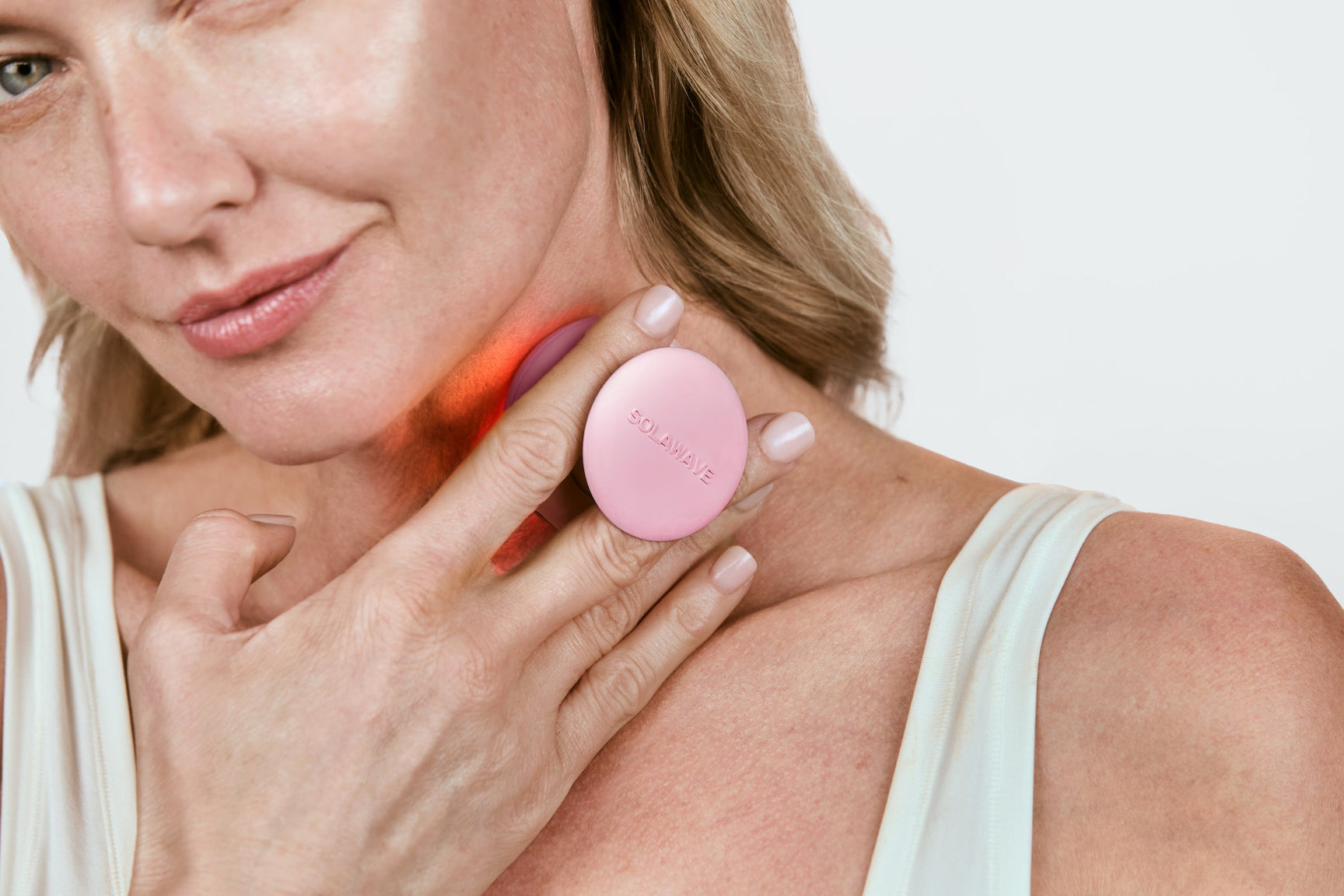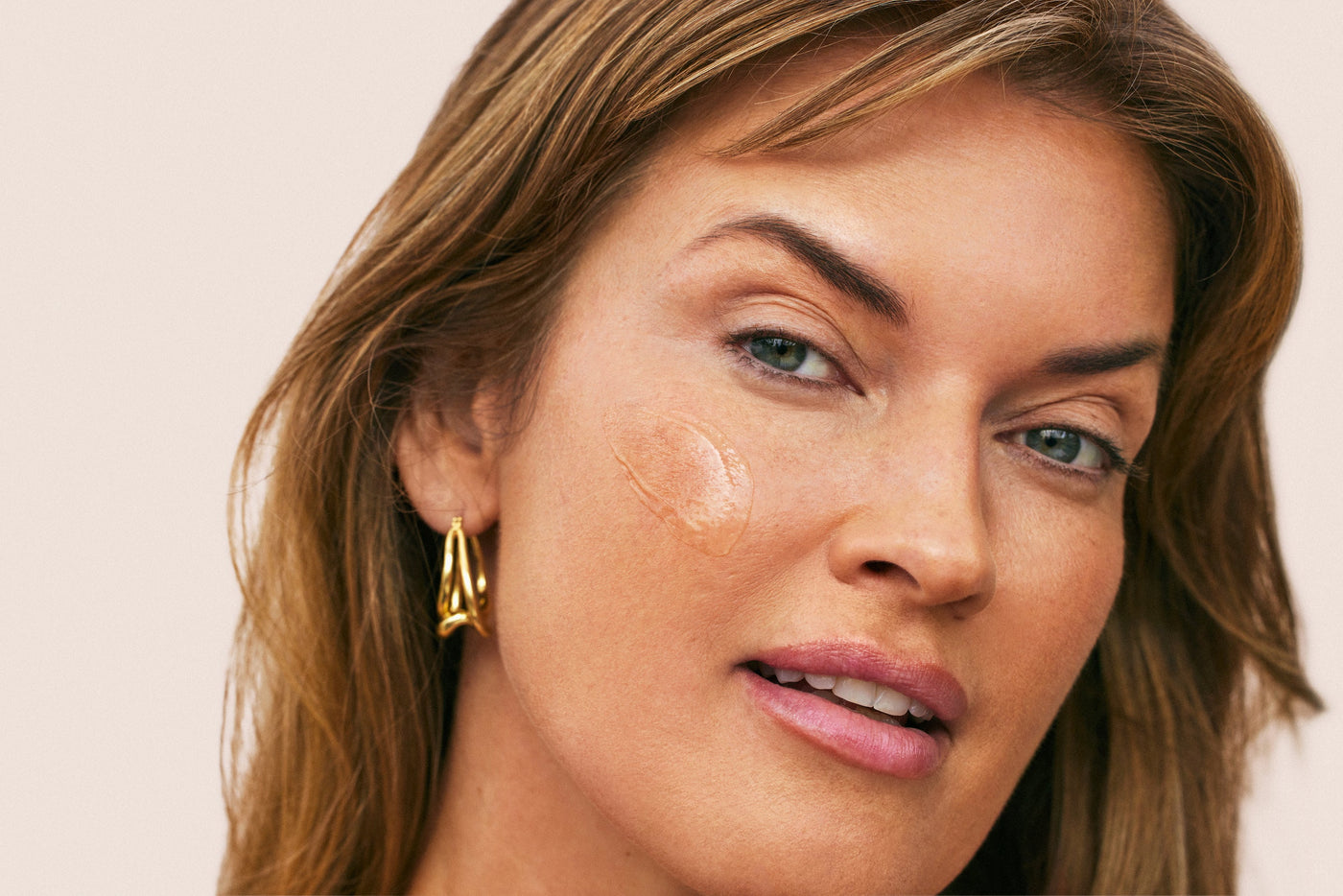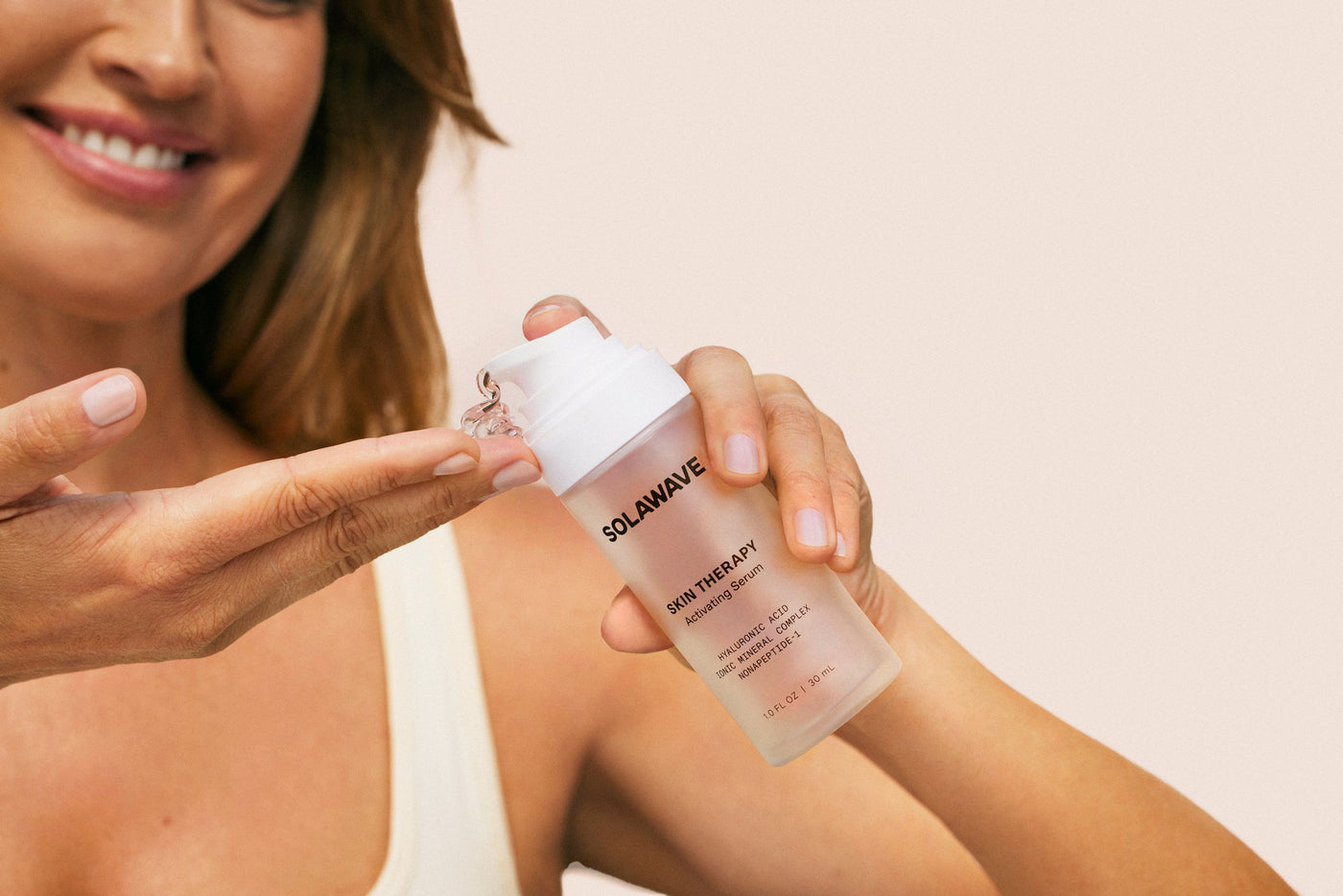

Photobiomodulation vs Red Light Therapy: What's the Difference?
In recent years, Light Therapy has become a buzzword in the world of wellness and skincare. With its promise of enhancing skin appearance, supporting muscle recovery, and even growing plants in space, it's no wonder people are eager to learn more about it. However, as you dive into this fascinating field, you might encounter terms like photobiomodulation, and it can start to get a bit confusing.
Photobiomodulation and Red Light Therapy are related but not quite the same. While photobiomodulation refers to a broad range of benefits and applications across various fields, when we talk about Red Light Therapy here at Solawave (and other skincare companies), we're specifically focused on skincare. This article aims to clear up any fog and help you understand the distinct uses and benefits of each.
What Is Photobiomodulation?
Photobiomodulation is a versatile form of Light Therapy that harnesses specific wavelengths of light to deliver a wide range of benefits across various fields. This technique is not limited to just skincare; it extends its reach into healthcare, sports, and even agriculture. In essence, photobiomodulation is the term used to describe the use of light to influence biological processes, which can include reducing signs of skin aging, supporting muscle recovery, enhancing plant growth, and much more.
In healthcare, photobiomodulation plays a role in pain management and the acceleration of healing processes, penetrating tissues to reduce inflammation and promote cellular repair. This makes it particularly beneficial for individuals recovering from injuries or surgeries, as it can help minimize discomfort and speed up recovery times. The non-invasive nature of photobiomodulation also makes it an attractive option for patients seeking alternative pain relief methods without the side effects associated with some medications.
For athletes and fitness enthusiasts, photobiomodulation offers a powerful tool to enhance muscle recovery and performance. Red Light Therapy devices specifically designed to boost cellular energy production can help reduce muscle fatigue and soreness, allowing athletes to train harder and recover faster. It supports the repair of muscle tissues after intense workouts, making it a valuable addition to any sports medicine regimen. This capability not only aids in maintaining peak performance levels but also helps in preventing injuries by ensuring muscles are adequately recovered before the next training session.
In agriculture, photobiomodulation has shown promise in improving plant growth and resilience. The use of Red Light Therapy in this field can enhance photosynthesis, leading to healthier and more robust plants. Interestingly, the modern applications of Red Light Therapy in agriculture have roots in experiments conducted by NASA. These initial studies aimed to grow plants in space, where traditional farming methods are not feasible. In providing the right light conditions, researchers were able to stimulate plant growth in a controlled environment, paving the way for innovative agricultural practices on Earth. This technology continues to evolve, offering sustainable solutions for increasing crop yields and improving food security.
What Is Red Light Therapy?
Red Light Therapy is a non-invasive, gentle skin treatment that uses a specific wavelength of light to penetrate the skin and offer a range of benefits related to combating signs of skin aging. This therapy is celebrated for its ability to support healthy collagen production, which is exactly what helps to reduce signs of skin aging, especially fine lines and wrinkles, giving skin a smoother and firmer look.
One of the best traits of Red Light Therapy is its ability to work extremely well alongside other forms of Light Therapy that also offer skin care benefits. Near-Infrared Light Therapy is commonly paired with Red Light to further support healthy collagen production, while also promoting a radiant glow thanks to an improved look of skin firmness and elasticity. Blue Light Therapy is also commonly used alongside Red Light Therapy, and targets acne-causing bacteria, helping to deter future breakouts by reducing sebum production.
Each type of Light Therapy penetrates the skin at different depths, triggering a range of results that ultimately contribute to healthier-looking skin.
Key Differences Between Photobiomodulation vs Red Light Therapy
Photobiomodulation is a versatile and expansive field of Light Therapy that utilizes specific wavelengths of light to interact with biological tissues, promoting a variety of beneficial effects. This broad term encompasses several types of Light Therapy, including Red Light Therapy, and finds applications across diverse fields such as healthcare, sports, and agriculture.
Through the power of light, photobiomodulation can promote healing, reduce inflammation, and enhance cellular function, making it a valuable tool in medical treatments, athletic recovery, and even plant growth.
In healthcare, photobiomodulation is used to manage pain, accelerate wound healing, and support recovery from injuries. Its ability to penetrate tissues and stimulate cellular processes makes it an effective non-invasive treatment option. In sports, athletes benefit from its muscle recovery capabilities, as it helps reduce soreness and improve performance. In agriculture, photobiomodulation enhances plant growth and resilience, optimizing photosynthesis and increasing crop yields.
Red Light Therapy, a specific type of photobiomodulation that we use in our devices, is primarily focused on skincare. It employs red wavelengths of light to penetrate the skin, supporting healthy collagen production and reducing the appearance of fine lines and wrinkles. This makes it an ideal choice for those seeking to improve their skin's appearance and achieve a healthier-looking complexion.
While Red Light Therapy can be and is very much so used outside of skincare, when we discuss it on our site and in our blogs, we're referring specifically to its application in skincare. This distinction is crucial, as the devices designed for skincare are tailored to deliver the precise wavelengths and intensity needed for aesthetic benefits, which is why you can't use skincare devices for muscle recovery and vice versa.
The design of Red Light Therapy devices for skincare is specialized to ensure optimal results. These devices, such as LED masks and handheld wands, are crafted to target visible signs of aging and improve skin texture. They differ from devices used in other applications of photobiomodulation, which are engineered to address specific needs in fields like sports medicine or agriculture.
Whether you're looking to enhance your skincare regimen or explore broader applications, photobiomodulation offers a range of solutions tailored to various needs.
Types of Photobiomodulation Devices and Their Uses
Different devices are designed to achieve specific outcomes. Skincare devices for Red Light Therapy, such as LED masks and handheld wands, are crafted to target visible signs of skin aging. These devices use precise wavelengths to achieve aesthetic skin care goals such as visibly improving skin texture and smoothing the appearance of fine lines. They offer a painless, gentle, non-invasive way to professionalize your skincare routine.
In contrast, devices designed for muscle recovery and pain management, like Red Light Panels, deliver concentrated doses of light to penetrate deeper into the muscles. These panels are ideal for athletes and fitness enthusiasts, as they aid in muscle recovery, reduce soreness, and enhance performance. They are not suitable for skincare purposes, as their design and light intensity are tailored for a different type of tissue penetration.
Similarly, devices used in agriculture are engineered to promote plant growth and resilience. These devices use specific light wavelengths to enhance photosynthesis and improve crop yields. A device intended for plant growth will not provide skincare or muscle recovery benefits, as each device is meticulously crafted for its intended application.
Choosing the right device is essential to achieving the desired results, as each type is designed with specific goals in mind. Whether you're looking to rejuvenate your skin, recover from a workout, or boost plant growth, make sure you select the device specifically designed for your needs to ensure you get the most out of your Light Therapy experience.
Photobiomodulation for Skin Care
If you're looking to dip into photobiomodulation for your own complexion (aka Red Light Therapy for skincare), we recommend the Wrinkle Retreat Face Mask & LightBoost Serum Kit to get started.
This award-winning mask combines Red and Near-Infrared Light Therapy to visibly tighten, smooth, and rejuvenate your skin. With just a 10-minute session, you can target fine lines, wrinkles, and uneven skin tone, hands-free and easily as a part of your regular skin routine. The mask's flexible, medical-grade silicone design ensures comfort and ease of use, making it a perfect addition to your daily skin care.
Beyond Red Light Therapy, other forms of Light Therapy offer unique benefits for your skin depending on what you're looking for.
Blue Light Therapy is a powerful tool, particularly effective in combating acne. It targets acne-causing bacteria and reduces sebum production, helping to prevent future breakouts. For those dealing with acne, the Bye Acne Pro Kit combines Blue Light Therapy with Red Light Therapy and serum-infused patches to provide a comprehensive solution for clearer, healthier-looking skin.
Amber Light Therapy is another type of Light Therapy, known for its ability to improve the look of uneven skin tone and reduce the appearance of puffiness. It works to visibly soothe the skin and promote a more even-looking complexion. The Eye Recovery Pro Kit leverages Amber Light Therapy alongside Red, Deep Red, and Near-Infrared Light to target the delicate eye area, addressing concerns like dark circles and puffiness for a refreshed and revitalized look.
Each type of Light Therapy offers specialized benefits, and by incorporating these technologies into your skincare routine, you can achieve a healthier, more radiant-looking complexion. Whether you're focusing on diminishing visible signs of skin aging, combating acne, or enhancing your overall complexion, there's a Light Therapy solution tailored to your needs.
Conclusion
In conclusion, while photobiomodulation and Red Light Therapy are often mentioned together, they serve distinct purposes. Photobiomodulation encompasses a wide range of Light Therapies used across various fields, from healthcare to agriculture, offering benefits like pain management, muscle recovery, and enhanced plant growth. On the other hand, Red Light Therapy is specifically tailored for skincare, focusing on reducing the appearance of fine lines, wrinkles, and other signs of aging by supporting healthy collagen production.
For those interested in enhancing their skincare routine, Red Light Therapy provides a non-invasive and effective solution to achieve a healthier-looking complexion. Devices like the Wrinkle Retreat Face Mask offer a convenient way to incorporate this technology into your daily regimen, delivering professional-grade results from the comfort of your home.
And as you explore the benefits of Red Light Therapy for skincare, you may end up considering the broader applications of photobiomodulation, too, when you see what Red Light can do for your skin!
Want to see the results for yourself? Check out our Red Light Therapy Before & After Results to see what our professional-grade, at-home Light Therapy devices can do for you and your skin goals!
Sources:
-
Photobiomodulation - American Society for Laser Medicine and Surgery
-
Mechanisms and Pathways of Pain Photobiomodulation: A Narrative Review - ScienceDirect
-
Photobiomodulation in human muscle tissue: an advantage in sports performance? - PMC
-
Mechanisms of photobiomodulation (PBM) in animal cells, plant cells and bacteria.














